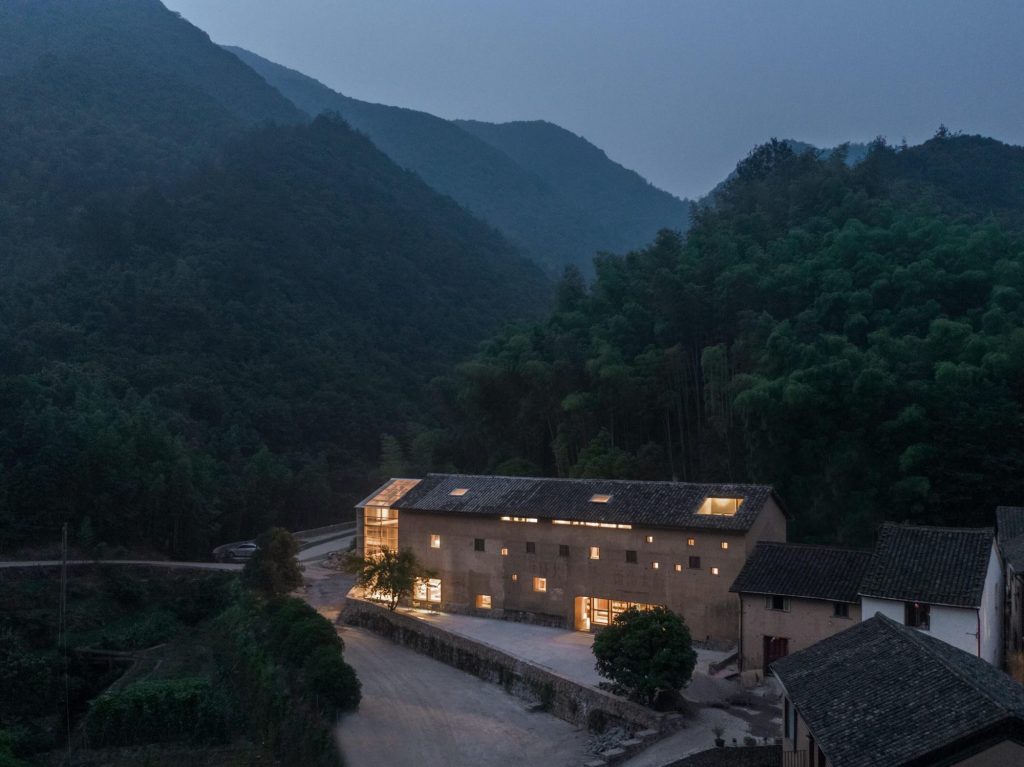Things end. Buildings, too, dilapidate and deteriorate. However, conversion and renovation projects can breathe in new life into old buildings, transforming them into bespoke modern spaces. We have selected several outstanding projects that manage to treat the existing structures with respect while creating a tangibly different spatial experience, where the old and the new enter into an exciting dialogue.
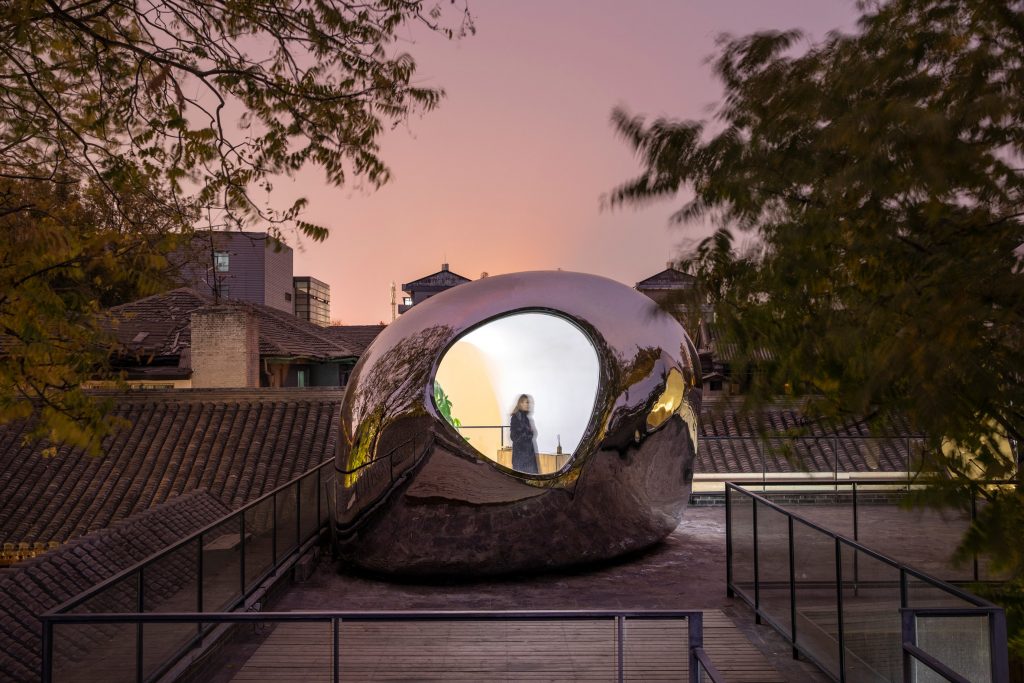
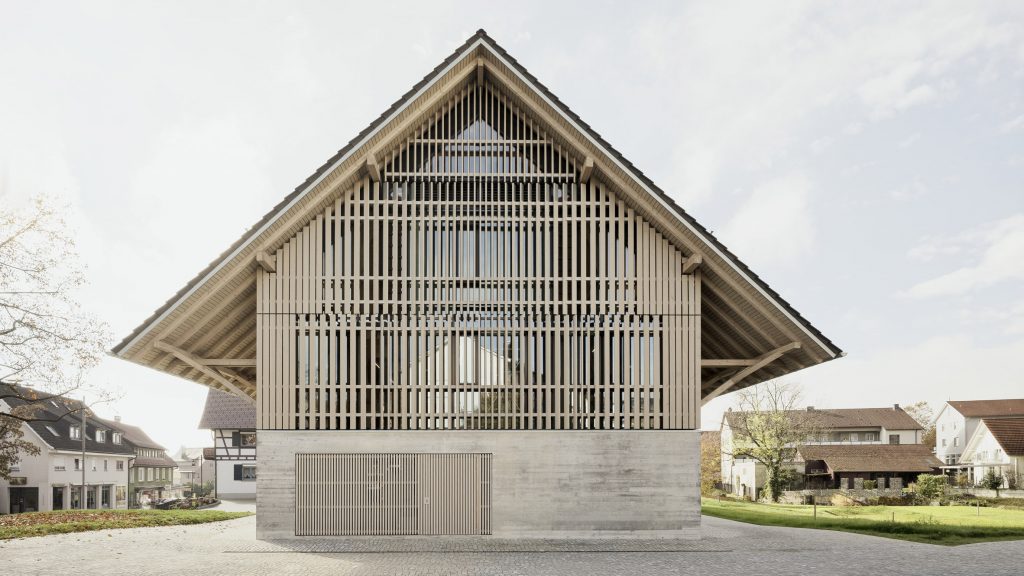
Kressbronn library by Steimle Architekten
Stuttgart-based Steimle Architekten has converted a former barn in the village of Kressbronn am Bodensee, Germany, into a library and community centre. The building is characterized by glazed openings screened by angled vertical louvres.
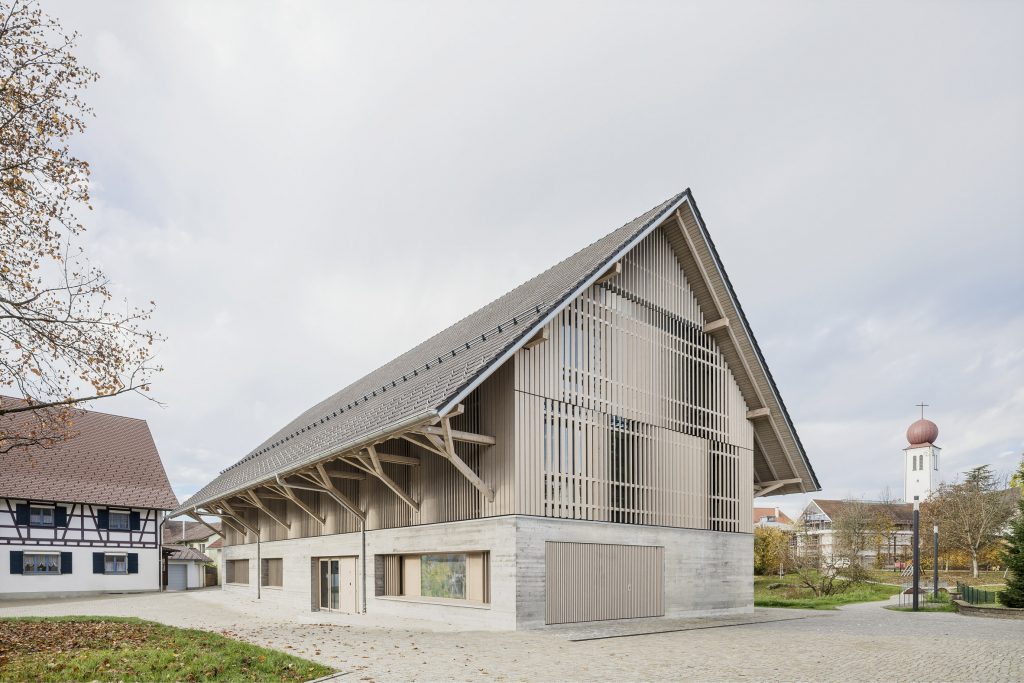
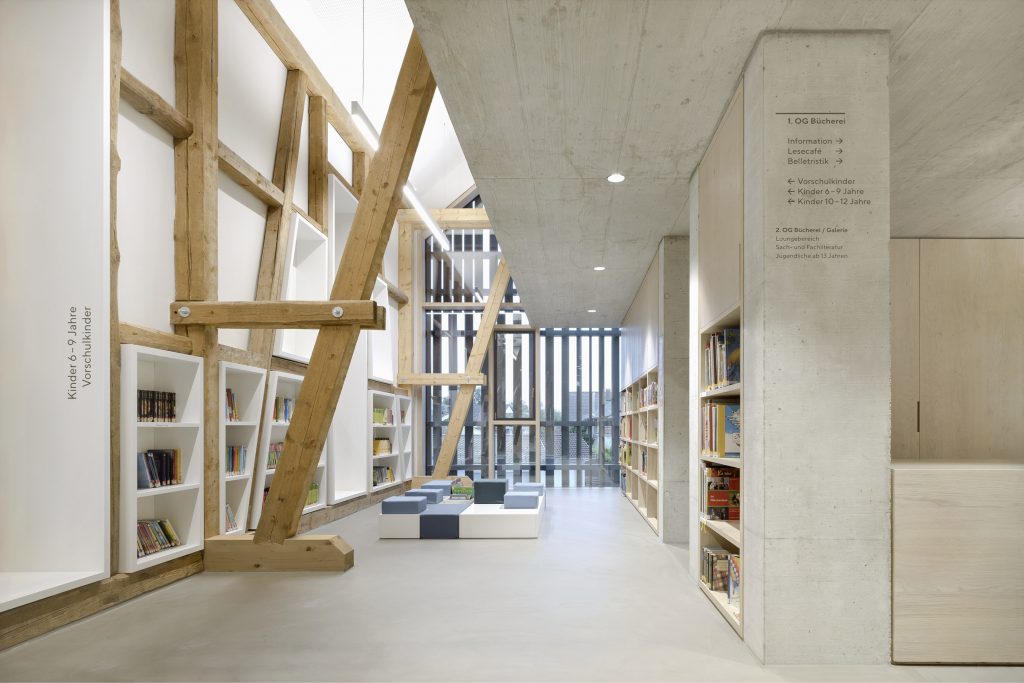
Kressbronn library by Steimle Architekten
The architects preserved the old barn’s character via maintaining the existing steeply pitched roof with its historical timber trussing that projects out far beyond the façade. Although the team used modern materials, they evoke the original construction. They replaced the barn’s traditional horizontal clapboard siding with vertical wooden slats that are rotated in varying degrees to allow diffused daylight in and create a dynamic effect across the building’s facades. The ground floor’s stone walls were replaced with an insulated concrete base with large, glazed openings allowing even more daylight to enter the interior.
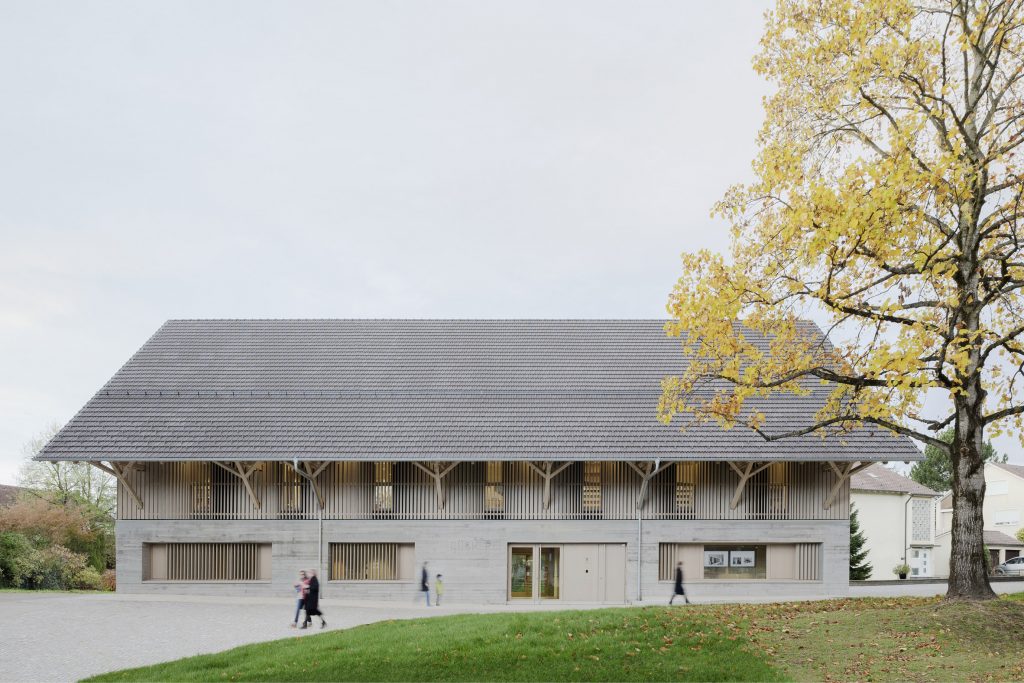
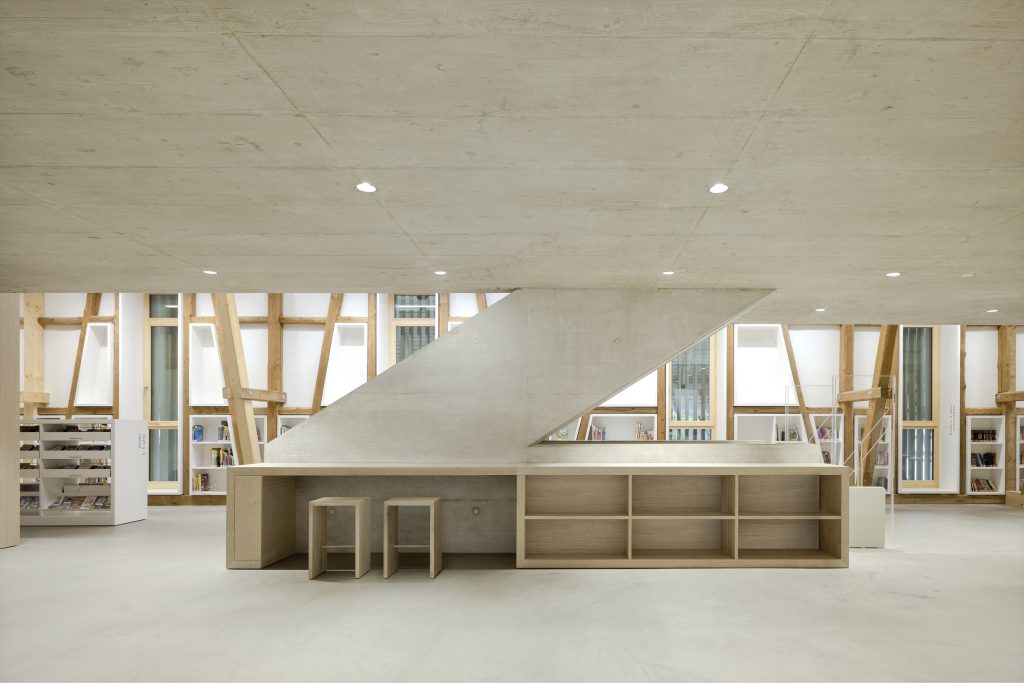
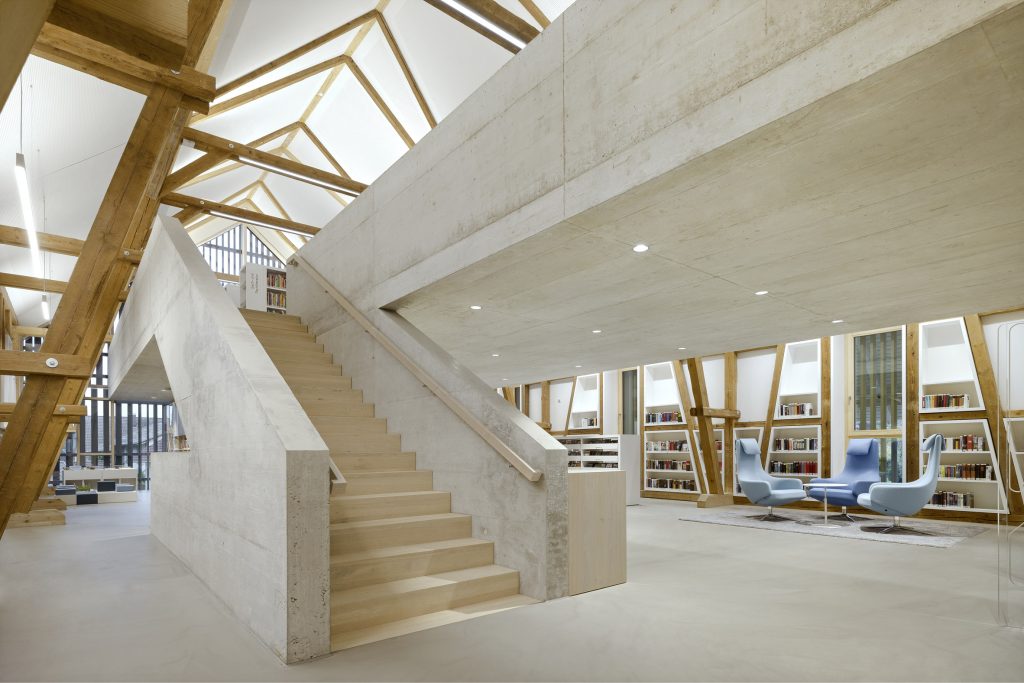
Kressbronn library by Steimle Architekten
The ground floor can be put to a variety of uses: as a dividable multipurpose room, an exhibition space, and a 24-hour library. The library on the first floor, with its media and magazine gallery and its reading stations, offers surprisingly open views though the entire building. The balance of past and present becomes the building’s special quality, not only from the outside but especially from the inside.
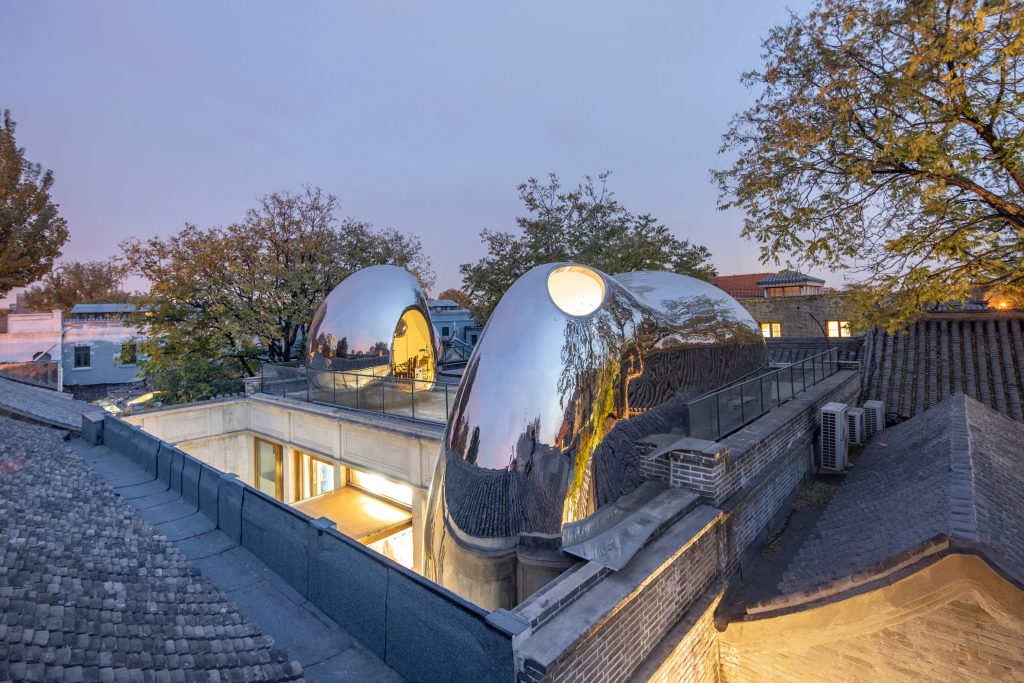
Hutong Bubble 218 by MAD (also header image)
Global architecture studio MAD has transformed a vacant courtyard house in one of Beijing’s ancient neighbourhoods, which are continually being damaged and demolished due to rapid urban development.
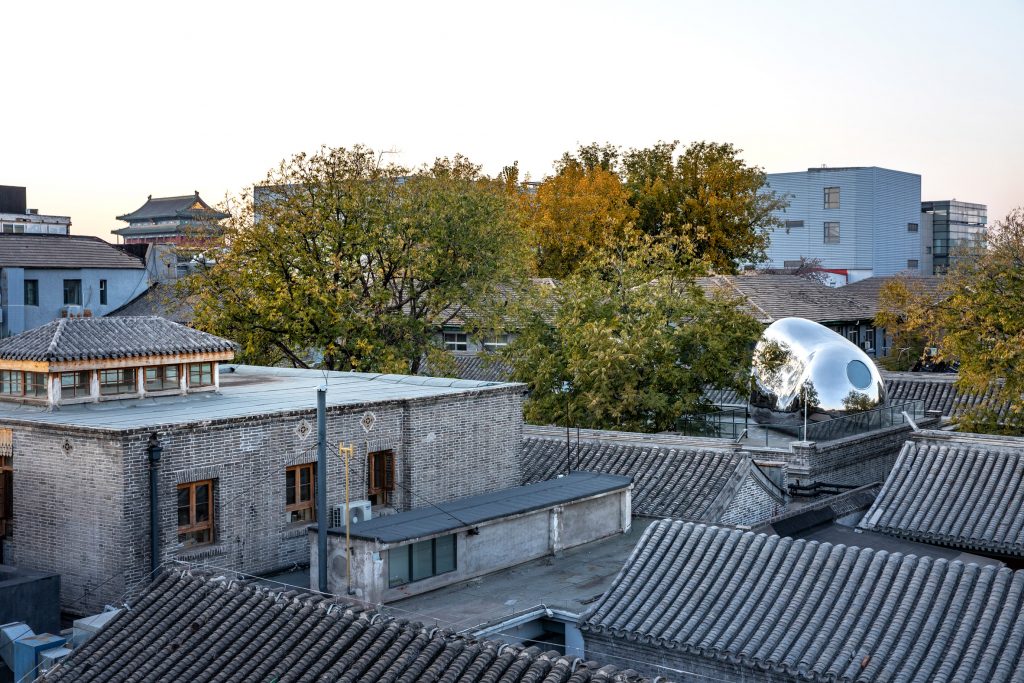
Hutong Bubble 218 by MAD
The overhaul project is aptly named Hutong Bubble 218. Hutong is a type of an alley formed by lines of traditional courtyard residences, while the transformation involves adding two mirrored bubble-like workspaces to the roof of the historic house. It is based in a dwelling near the Forbidden City palace that was built in the late 1800s to house Beijing’s first international hospital and was later converted into a residence for more than 20 families, to be eventually abandoned after several structural interventions led to its dilapidation.
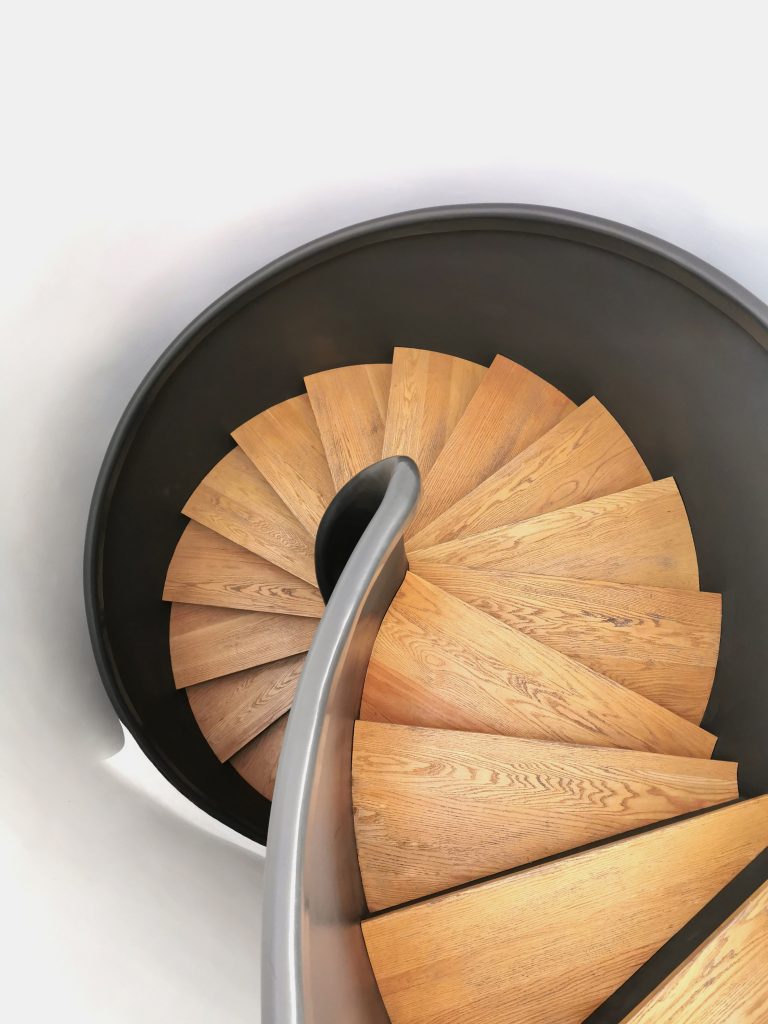
Hutong Bubble 218 by MAD
Sitting on the rooftop and not visible from outside of the hutong, the two sculptural interventions are intended to function as interchangeable spaces for meetings, meditation and tea rooms. The larger one is designed to appear as it is spilling over the edge into one of the house’s courtyards to meet the ground floor, encasing a spiral staircase.
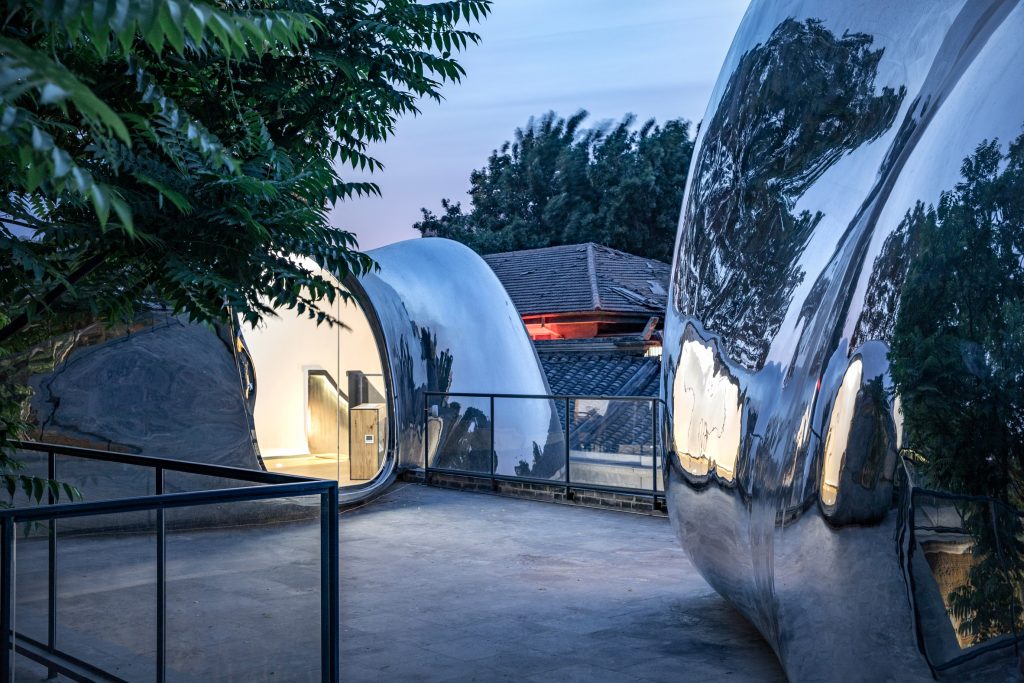
Hutong Bubble 218 by MAD
Although the structures look futuristic and surrealistic, the mirrored stainless steel cladding helps them blend in by reflecting the ancient building and the nature around them.
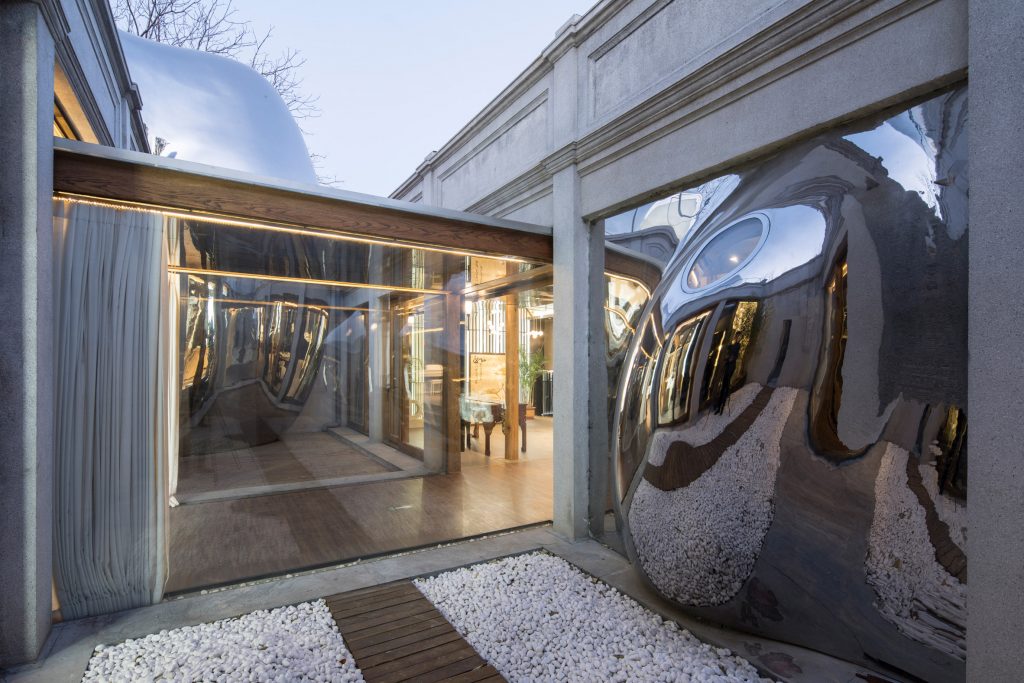
Hutong Bubble 218 by MAD
As part of the project, the façade facing the street was renovated with new grey bricks and new glazing was added to allow more light reach the interior. The main courtyard has also been restored to its original layout, with its wooden lining stripped of any stains and all damaged parts replaced with exact reproductions.
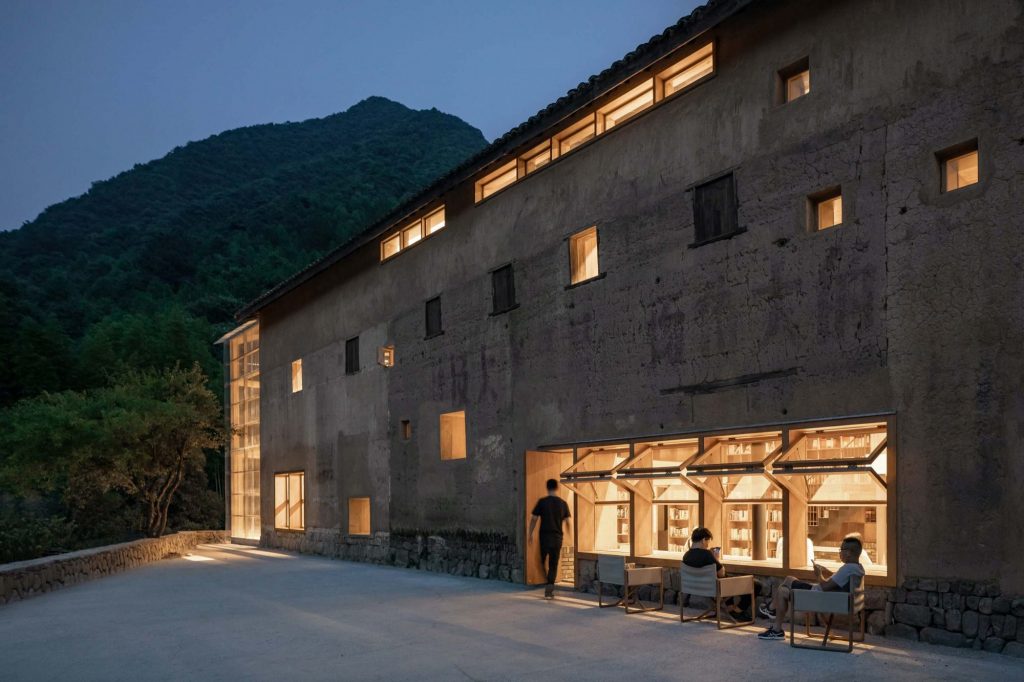
Capsule hotel by Atelier Tao+C
Chinese Atelier Tao+C has redesigned and revived an old house in Village Qinglongwu located in the deep forests of Tonglu, Zhejiang province, China, by inserting a capsule hotel, a community bookstore and library. The original rammed-earth structure supported by a timber framework has been given a glazed gable-end wooden extension.
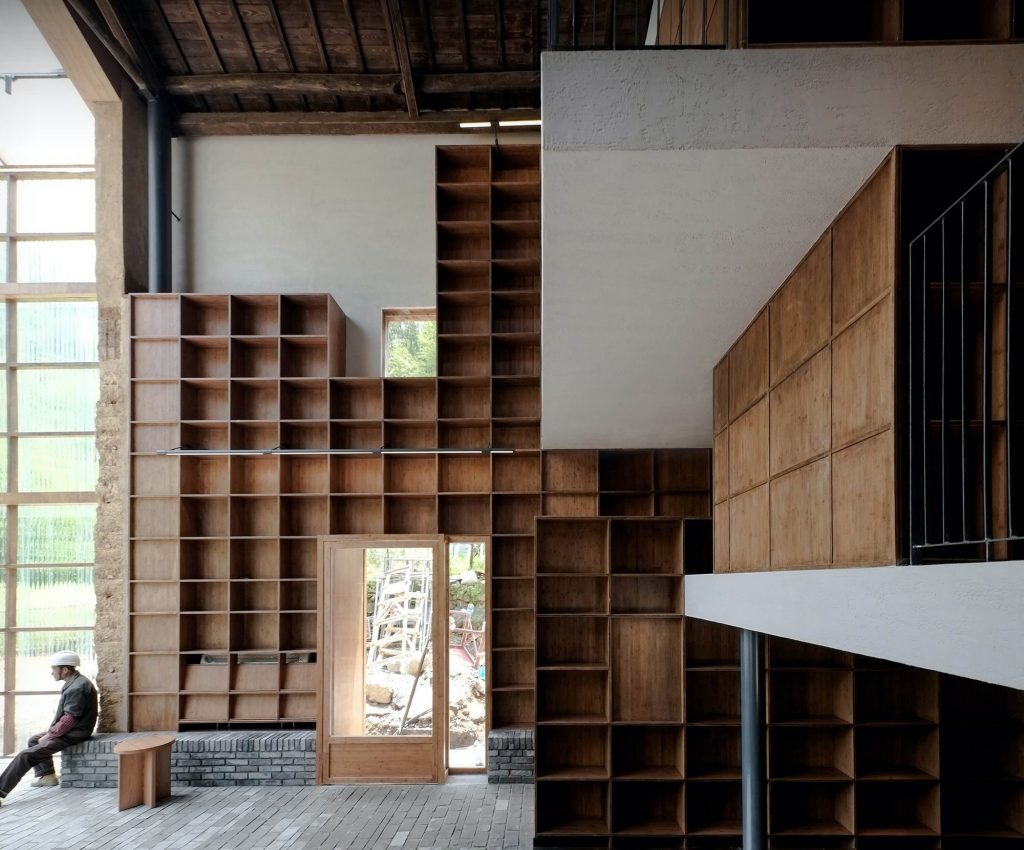
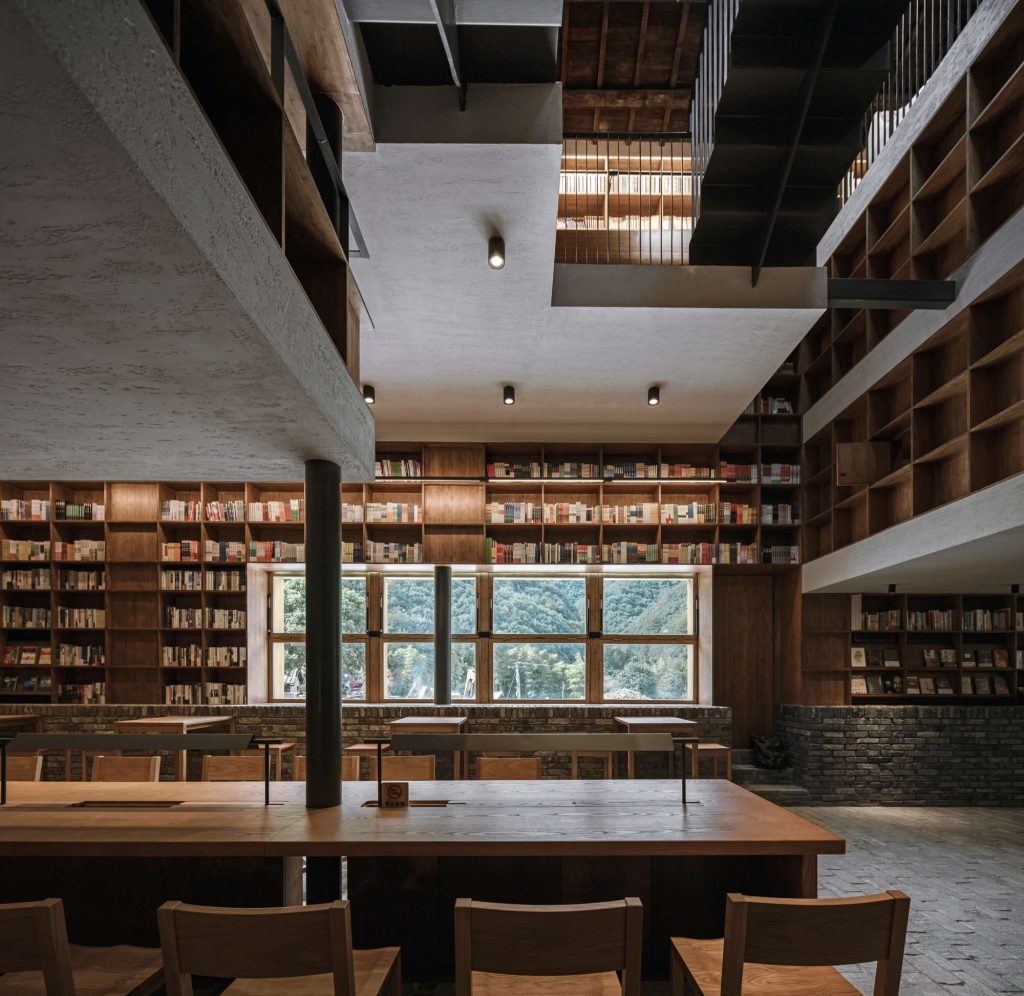
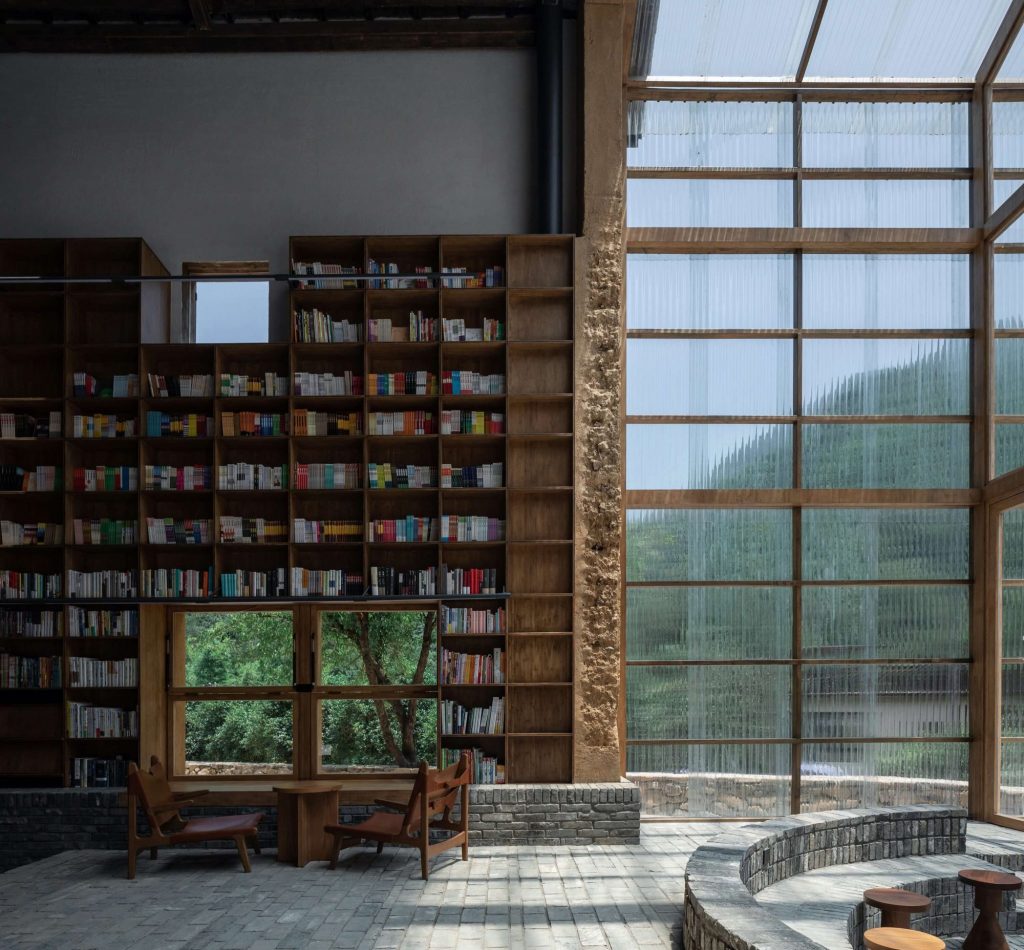
Capsule hotel by Atelier Tao+C
The hotel is split into separate areas for male and female guests, equipped with ten capsule rooms and a bathroom each. The original floors and partition walls were removed, and the bedrooms were stacked inside the existing triple-height shell. The space doubles as a library and a bookshop featuring bookshelves made from local bamboo, which cover the interior of the building as well as the outside of the capsules.
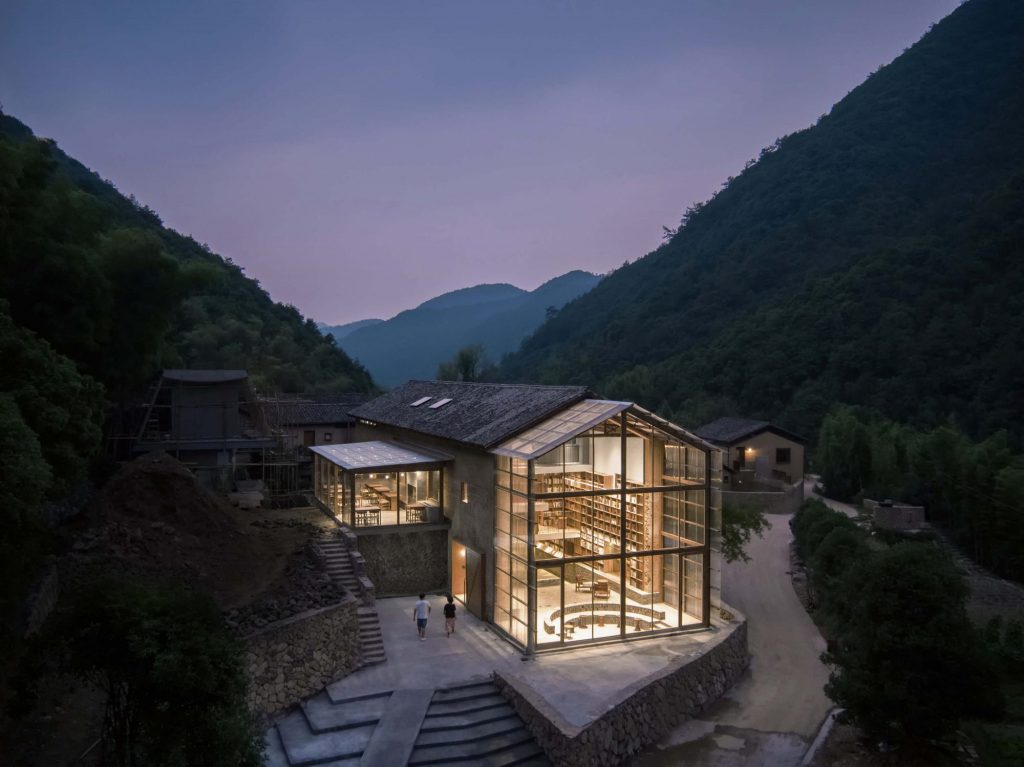
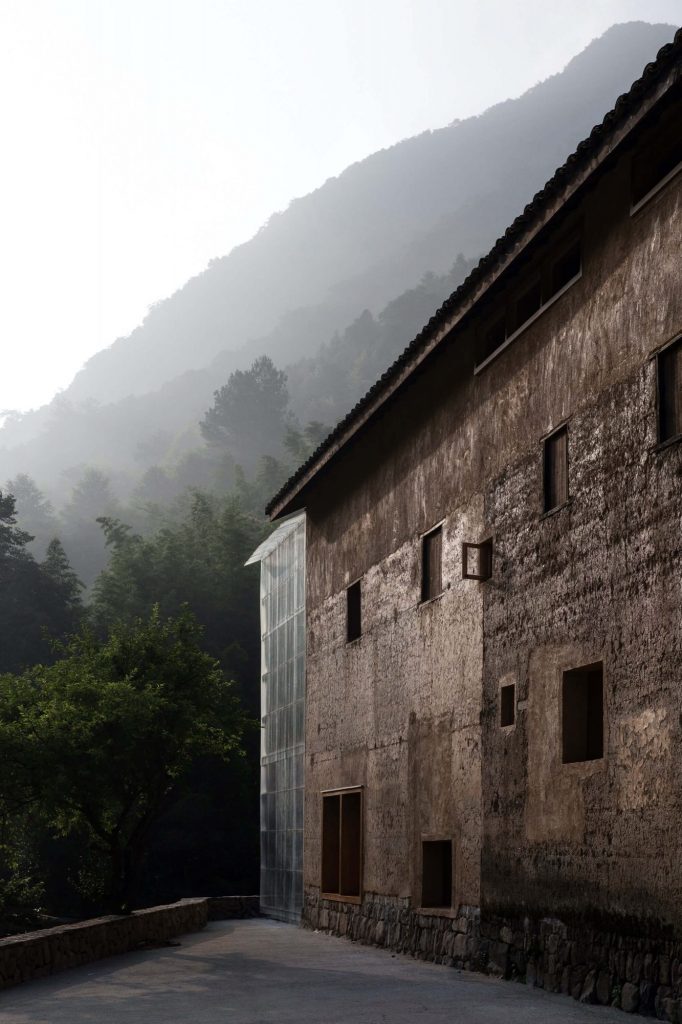
Capsule hotel by Atelier Tao+C
The architects cut the whole gable wall on the eastern side of the building and embedded a transparent structure of wooden frames and corrugated polycarbonate panels, introducing the green of the mountains and forests into the interior. At twilight, the whole building is illuminated by the light from within, looking like a lighthouse in the calmness of the night.
